Project management terminology
Update July 2023: If you are looking for up-to-date definitions of OpenProject terminology, see our recently published glossary of OpenProject.
Ever wondered what all these project management terms actually mean? We give you a short introduction, please let us know if you want us to add any more.
Gestion de projet en cascade
Waterfall is sometimes referred to as classic or traditional project management. It is characterized by a sequence of tasks. One tasks ends before the next can start. As the processing of tasks flows in one direction, it got the name waterfall. Because of this linearity, the timing of a project becomes very important and must be done very accurately to avoid having to go back a long way and restart from scratch. Often, the size of the team working on the project will grow as smaller tasks are completed and larger tasks begin. A Gantt chart is a typical way of planning a waterfall project.
Gestion de projet agile
Agile project management recognizes the complex and uncertain nature of projects. Agile is an adaptive approach: rather than managing one big project at a time, it is broken down into smaller projects managed by cross-functional teams. Thus, administration and process requirements are reduced and the project’s progress is measured in small steps. That is why agile project management allows for more flexibility and adaptation to market needs along the way. Customer feedback is integrated regularly to increase the chance for a successful launch. In other words, you can also describe agile as an iterative approach, aimed at continuous improvement with regular customer feedback. Teams are working in sprints where prioritized tasks are completed in a short period of time, e.g. 2-weeks. These prioritized tasks are not fixed and are worked on based on the success of previous sprints and customer feedback. Moreover, different smaller teams can work in parallel, allowing a more speedy delivery.
Scrum
Scrum is an agile project management method. It is mostly used in very complex product development and originated in software development but can be used in any industry. Its principle is to break down a complex project into several smaller and easier tasks. You start developing, track the progress and adjust and develop the next step. Scrum encourages teamwork and accountability. Incrementally the sub-teams together would deliver the big and complex project. A task board is an example for a scrum tool:
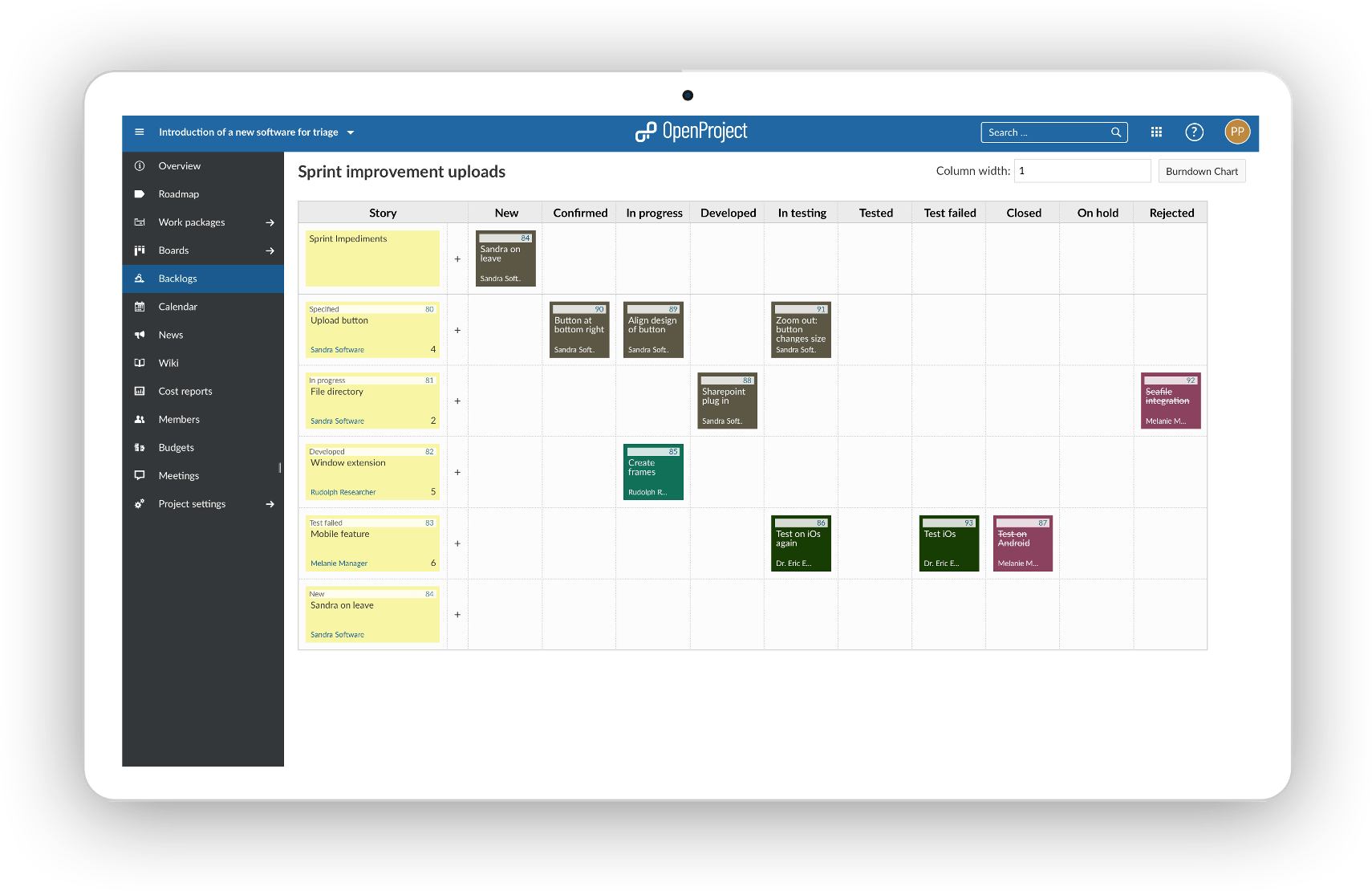
Sprint
Sprints are part of agile project management, specifically the Scrum methodology. A sprint can be defined as a set period of time during which a certain task is done and reviewed. Teams are working in sprints where prioritized tasks are completed in a short period of time, e.g. 2-weeks. These prioritized tasks are not fixed and are worked on based on the success of previous sprints and customer feedback.
Kanban
Kanban is also part of agile project management. It is an approach that takes visual cues to give you an idea of where you are currently standing and are heading in the project. That way, Kanban tries to improve a team’s collaboration efficiency. The following Kanban board illustrates what it can look like.
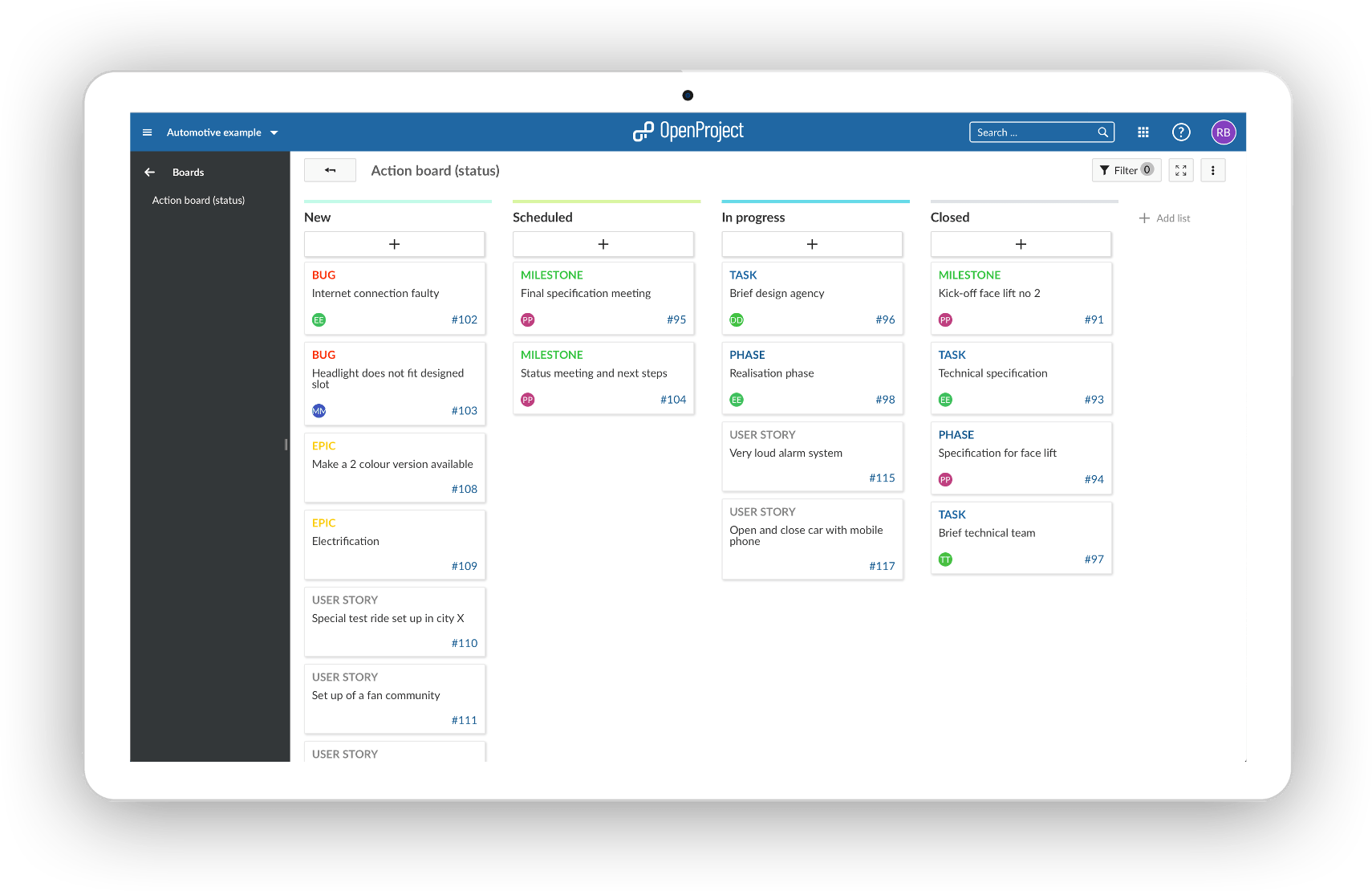
Lot de travaux
The classic definition of a work package is a group of related tasks within a project. Each work package contains a set of tasks that can be worked on together and delivered on time. In OpenProject, we use work packages to capture and organize any task, epic, user story, bug, feature, phase, milestone. Of course OpenProject allows you to group tasks together in a phase to rebuild the classic definition of a work package.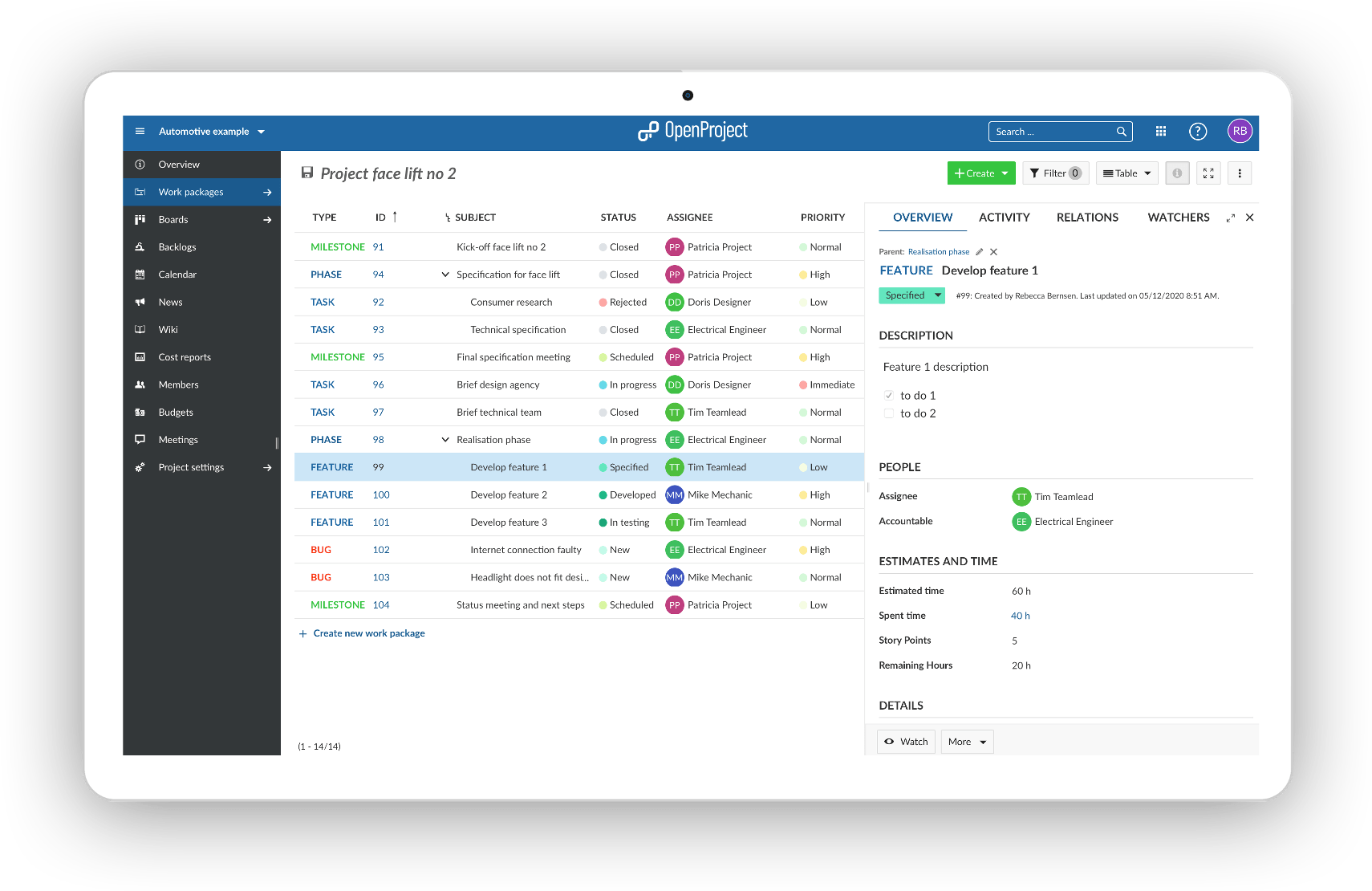
Backlog
The backlog is a tool in scrum. In essence, a backlog is a list that contains everything needed to achieve a specific outcome. In a backlog you can order items according to priority. The ones with highest priority will be worked on next. A backlog is always evolving, items are added or closed as the project progresses. What makes the backlog stand out is that it works as a single source of truth on what needs to be done. Multiple scrum teams can work on a project with one backlog that provides them with the information about the deliverables’ requirements. Most often you will find product backlogs. But you can also use bug backlogs, idea backlogs or backlogs to process sprints.
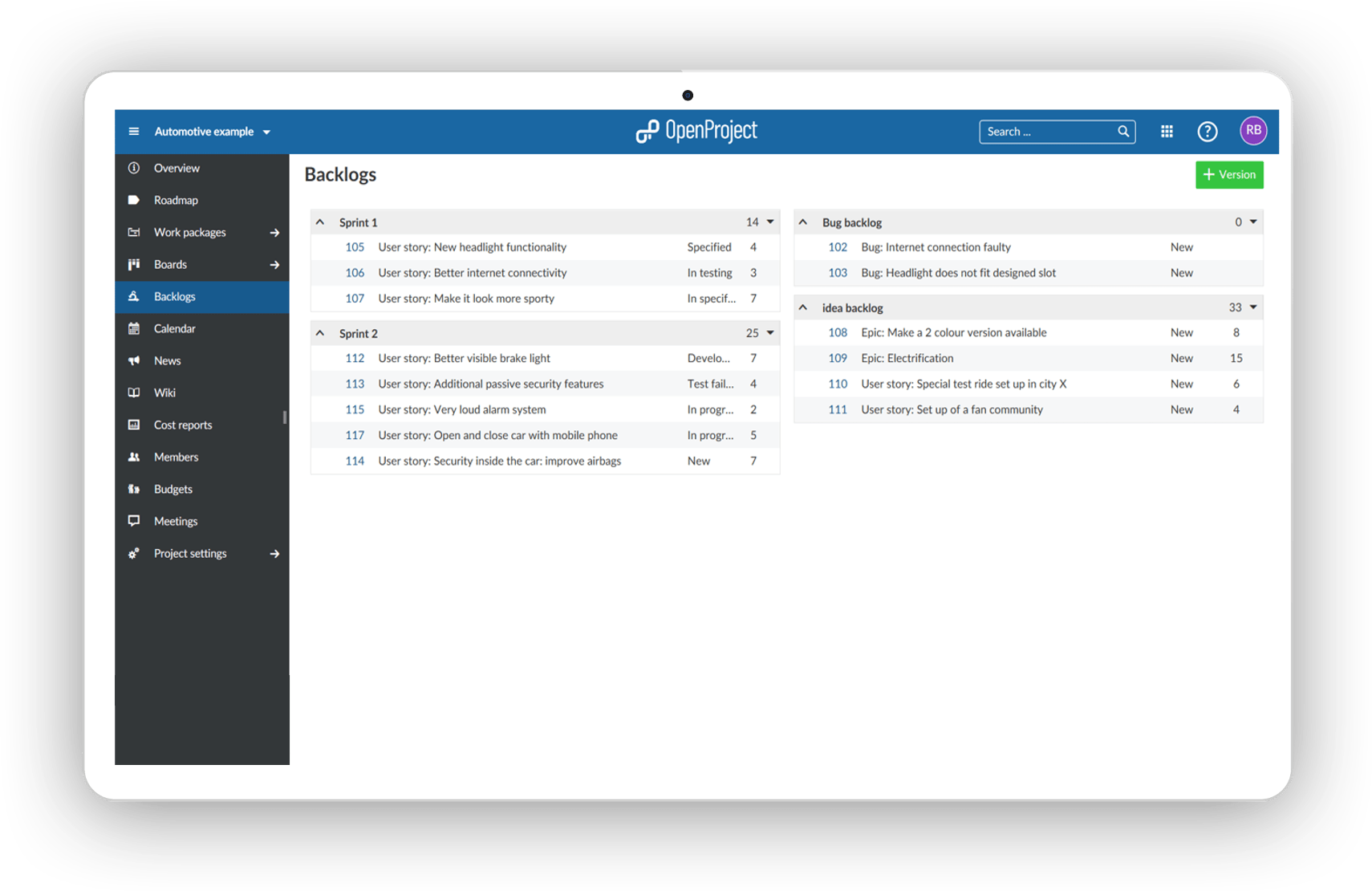
Récit utilisateur
The project team knows how to solve a customer’s problem. A user story is part of how to solve the customer’s problem, i.e. something that the customer wants. In order to make it a workable unit, the user story should have a scope that can be processed within one sprint. User stories are often used in the product backlog,
Epic
An epic describes the needs of a customer or an insight. The epic will get broken down into smaller, workable user stories that can be processed during a sprint. So you could call an epic also a sum of user stories.
Fonctionnalité
A feature is a functionality that the customer values and that will deliver business value.
Bug
A bug is an unexpected issue. A project management software can help you perform bug tracking.
Story points
Story points are assigned values (points) to items (tasks, features, user stories etc.) to give them a priority. They show the estimated effort to fully complete the item. In order to make a good estimation about the effort, it is important to agree as a team on how to use the set scale. At the same time, you need to make sure that you do the estimation in the team where everyone involved in the item is taking part.
Burn down chart
A burn down chart is a tool mostly used in scrum. It is a 2D graph that shows the amount of story points completed versus the time remaining.
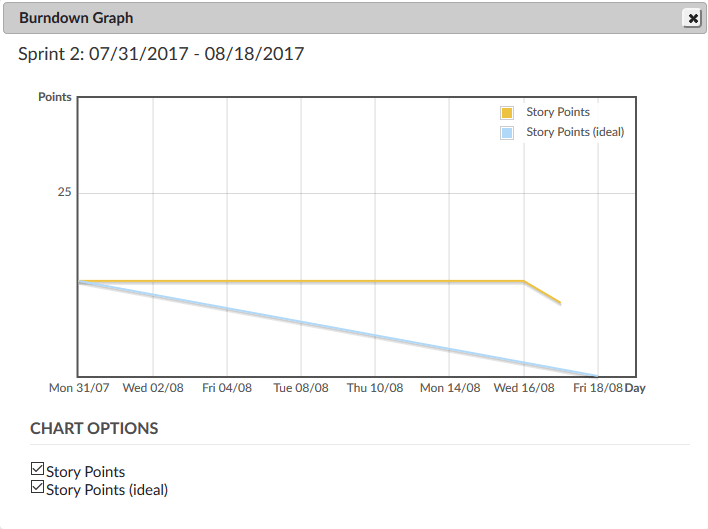
If you want to learn more about project management in general, please find here our project management guide.



